Key points
- Rate of monthly house price growth falls to the lowest rate since December 2019, with average values up just +0.1% in May
- Average house prices are up +8.4% on the year, taking the average value to £251,550
- Wales continues to lead price growth, up +11.4% on the year while London lags at 3.9%
- Emerging signs of impetus in the market slowing, with activity receding from record highs with sales agreed down 13% yoy
- Buyers expected to become more price sensitive as mortgage rates rise, leading to a slowing in the rate of price growth in H2
Average house price growth at +8.4%
Average house prices were broadly unchanged in May, rising by just 0.1%. This is the lowest rate of monthly price growth since December 2019. Growth on a quarterly basis, at 1.4%, is the slowest rate of in 15 months.
In total average prices are up +8.4% on the year, down from +9.2% in April, and taking the average UK house price to £251,550.
Wales registered the highest price growth again, up +11.4% on the year, down from 13.4% in February. Average values in the principality have risen by an average of £32,000 over the last 24 months, taking average home values to £192,500.
In another continuation of recent trends, London registered the slowest price growth in May, with average prices up +3.9% on the year, taking the average home value up by almost £30,000 over the last 24 months to £516,100.
Yet there is still a broad range of price growth within the capital. Homes in Barking and Dagenham have registered an average rise of +7.2% over the last 12 months, while those in Havering have risen by +6.9%. In contrast, average home values in Camden and Southwark are up just 1.8%.
Of the UK’s largest cities, Nottingham has highest price growth at +10.4%, taking the average home value to £190,300, followed by Bournemouth at +10.2% which has pipped Hastings as the south coastal city with the most rapid rate of house price growth.
Aberdeen house prices, which are closely aligned to the North Sea Energy industry, are down 2% on the year, taking the average home value to £140,200. Average values in this city have fallen by around £6,400 over last 24 months
What will happen to house prices next?
There are several factors signalling that the impetus in the market seen over the last two years is starting to ease.
1. Buyer demand
As can be seen from the chart below, the level of buyer demand in the market, while still high compared to the five-year average, is beginning to recede to more normal levels.
As the pressure on supply from buyer demand starts to ease, it will put a brake on the intense upwards pressure on pricing.
2. Time to Sell
Another signal from the market is coming from the speed at which home sales are proceeding. The average time to sell (listing to sale agreed) is rising - up to 22 days in May from 20 days in March.
The fastest-moving market is in the South West, with the average length of time taken between listing and agreeing a sale less than three weeks (19 days). This reflects the high levels of demand in the South West since the start of the pandemic, as some buyers making a move prioritise access to rural and coastal settings. This is underlined by price growth in Bournemouth at 10.2%, putting it among the cities with the highest levels of growth in the year to May. We expect the slight slowdown to continue, with buyer demand for houses in the South West seeing the sharpest decline over the last month, down 14%, even as it remains 37% above the 5-year average.
Homes in London are staying on the market longest, with 35 days between listing and sale agreed – although this is still a large reduction on the 5-year average of 50 days to agree a sale.
The average time taken from searching for a home to exchange, at which point buyers can move in, is now averaging around 170 days - around five and a half months, according to Zoopla’s recent buyer survey, signalling that those who want to move this year need to consider commencing their search, and their home sale.
3. Mortgage rates
Mortgage rates are rising as the cost of money increases, driven by increases to the Bank of England base rate.
While tracker mortgage rate and SVRs tend to move in line with the base rate, lenders have more control about how they price their fixed- rate loans, based on how much funding they have pre-secured at certain rates, and how competitive they want to be in the market. So the rise in the cost of fixed-rate mortgages is less linear.
Even so, buyers are now facing average rates of 3.37% for a 5-year fixed-rate loan, according to Moneyfacts, compared to 2.64% in December. This increases the annual cost of a loan for an average priced home (£250,000) with a 25% deposit and 25-year term by £870. If interest rates continue to rise, the costs of paying for a mortgage will also continue to climb, meaning that for those looking to move home, taking action sooner rather than later will be beneficial.
The stress-testing rules for mortgages introduced since the global financial crisis means that many existing homeowners have proved their income can withstand rising interest rates. This signals limited numbers of forced sales, which have a negative impact on pricing. The recent announcement that stress testing rules will be adjusted for borrowers, so they no longer have to prove they can afford repayments at the Standard Variable Rate +3%, will mean a some additional borrowers, especially first-time buyers, will be able to access loans, but it will not make a significant change to lending levels. The general rule for lending to be limited to 4.5 times income remains.
The majority of homeowners are also locked into a fixed-rate mortgage, meaning they are protected from current interest rate moves. There is also a buoyant employment market, helping offset the more challenging inflation environment for now.
Outlook
The factors outlined in this report signal that the rate of house price growth will slow through the rest of the year, but we are not anticipating price declines.
House price growth remains strong by any measure. The levels of annual growth seen over the last couple of months are the highest since late 2007.
There are signals now however that the impetus in the market is beginning to ease, although this will take some time to be reflected in the rates of annual house price growth, which are more a reflection of sales being agreed several months earlier.
Even so, we expect price growth to start to fall back, reflecting the fact that buyer demand is starting to normalise from record peaks, although it is crucial to highlight that demand levels are still more than 30% higher than the 5-year average.
The market is still moving very quickly, but the time between listing a home for sale and agreeing a sale is starting to creep up, another signal that the market is moving back towards more normal conditions.
The economic outlook, and multiple base rate rises, will act as a drag on sentiment and activity as we move through the rest of the year, but activity levels so far this year still indicate transactions at 1.2 million across the UK.
But we do expect the rate of price growth to ease – on a monthly basis price growth has already moderated. A continuation of this trend, with some monthly declines, will mean annual price growth will reach +3% by year end.
To find out how much your property is worth click here to get an instant valuation
Or
If you would like to talk to an experienced, local agent then get in touch here.







Share this with
Email
Facebook
Messenger
Twitter
Pinterest
LinkedIn
Copy this link